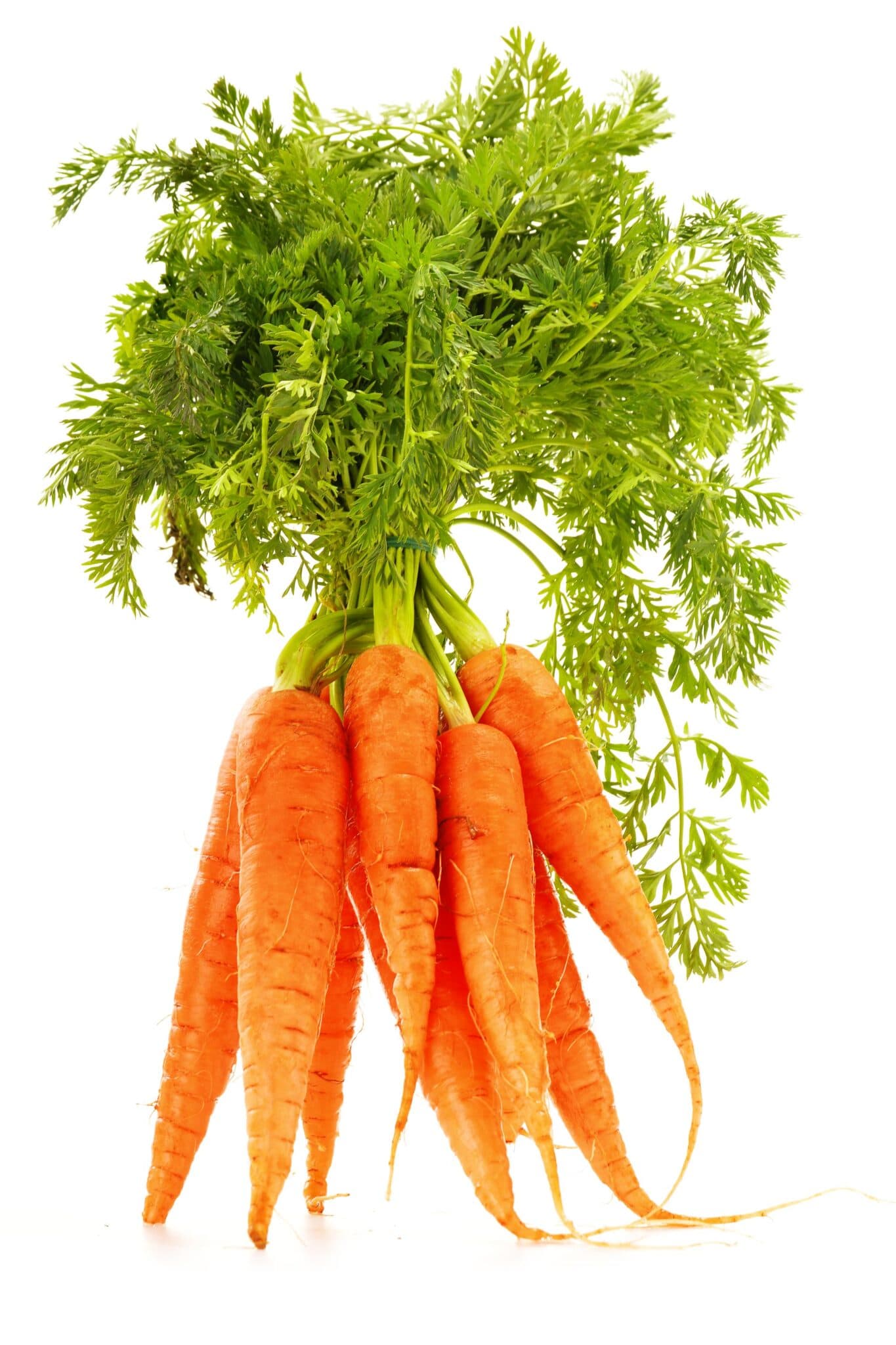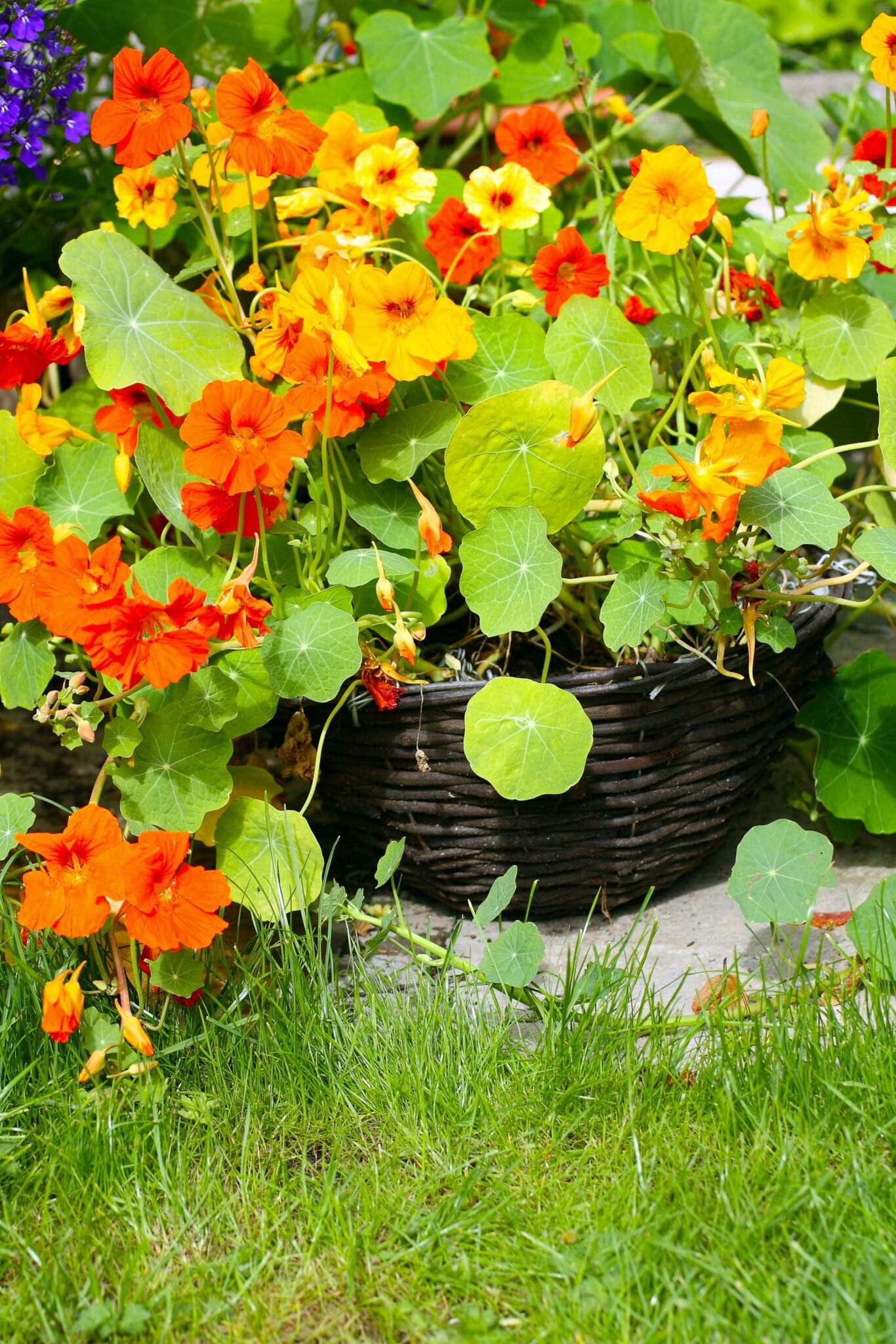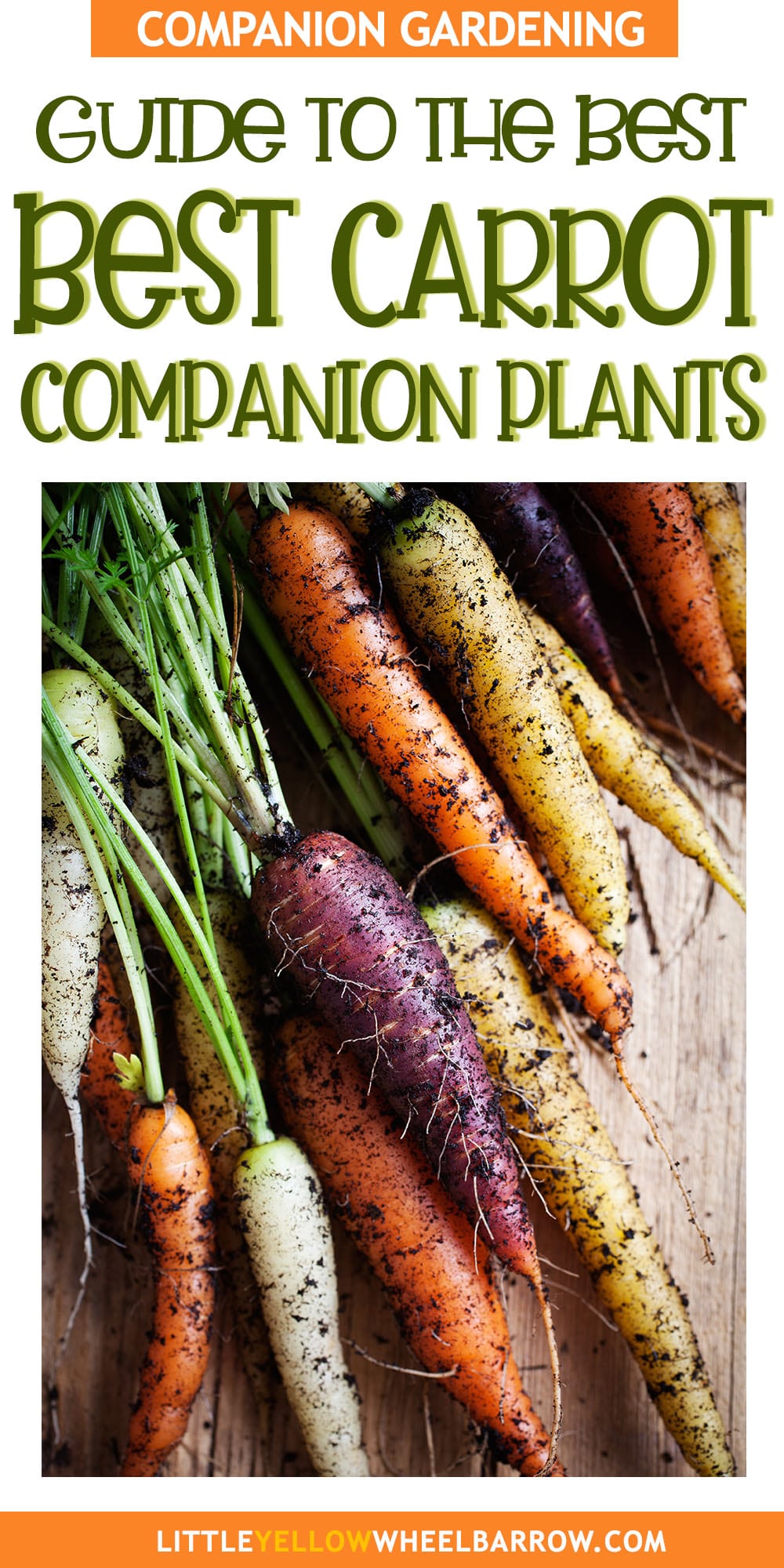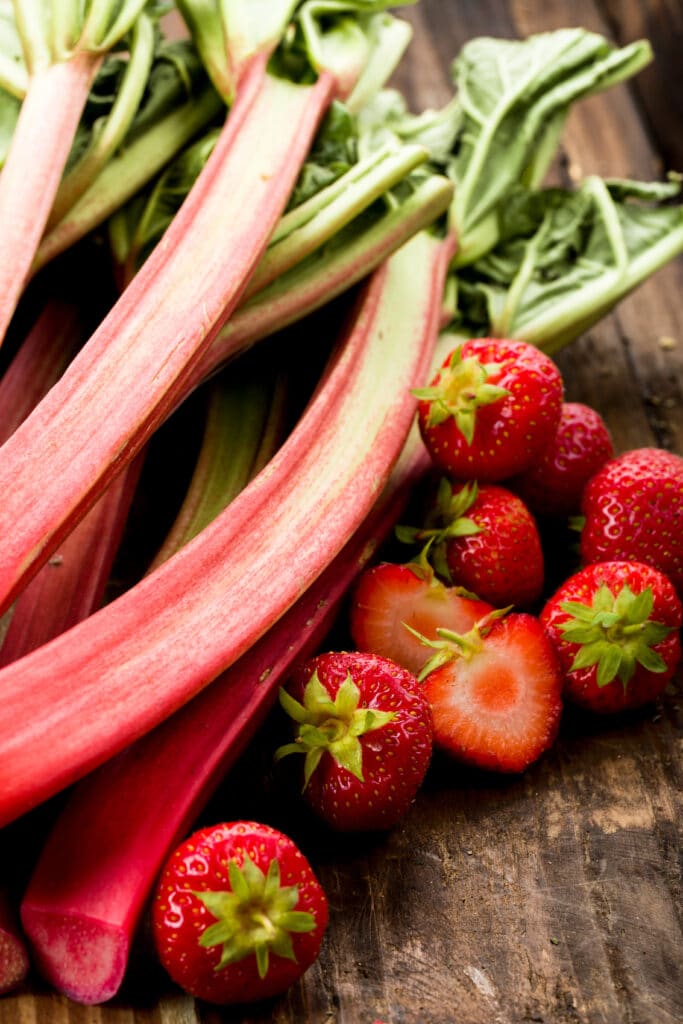The Best Carrot Companion Plants For Your Garden
Choosing the right carrot companion plants can help you grow bigger, healthier carrots and reduce the need for chemicals and fertilizers. Anyone planning on growing carrots this season should consider using companion plants to help reduce pests, improve soil, and attract beneficial insects. In this article we’ll discuss which plants make good companions for carrots, and how to use them to address specific gardening issues.

Selecting the perfect carrot companion plants isn’t just about creating a pretty garden; it’s about nurturing healthier, more robust carrots while minimizing the use of chemicals and fertilizers. By teaming up with the right companions, you can create a thriving ecosystem that naturally keeps pests at bay, enriches the soil, and beckons beneficial insects to your garden. Discover how companion planting gets different plants to work together like a team, creating a beautiful and healthy garden where carrots and their companions flourish side by side.
Good Carrot Companions
There are several amazing companion plants you can add to your carrot bed.
The best companion plants will benefit your carrots while also receiving benefits from the carrots themselves. Here we have listed the best, along with a summary of how they benefit your carrot harvest:
Leeks
I always plant leek companion plants with my carrots in my vegetable garden. It’s my go-to carrot bed design every year.
Leeks make a perfect companion relationship with carrots. Carrots will help deter leek moths from your leek crop, and leeks, in turn, protect your carrot crops from carrot flies.
Carrots have deep taproots, whereas leeks have very shallow roots. Growing them together ensures neither crop will interfere with growth or compete for water and nutrients. Both plants thrive in the same environment; they like full sun and plenty of water, so you won’t end up with one plant parched and the other swimming.

Pole Beans, Bush Beans, and Peas
Members of the legume family, such as pole beans, bush beans, and peas, are all nitrogen-fixing plants. Nitrogen-fixing legumes have specialized nodules on their roots that host nitrogen-fixing bacteria, which convert atmospheric nitrogen into a form that plants can use. This process enriches the soil with nitrogen, a crucial nutrient for plant growth, including carrots.
Legumes of all types enjoy full sun and moist soil, making them excellent companions for carrots.
- Related: Did you know you can grow peas in containers? Of course, you can, and it works exceptionally well. See our step-by-step guide on growing peas in containers!
Onions
Onions make an excellent companion plant for carrots due to their ability to deter carrot rust flies. The pungent aroma of the onions will also repel aphids.
Carrots and onions also enjoy a similar growing environment of full sun and moist soil conditions.
Radishes
Radishes will help loosen the soil as they grow. Breaking up heavy soils with radishes is an excellent way to create a better-growing environment for your carrots.
Radishes germinate faster than carrots, so you can plant radish seeds around the same time that you plant carrot seeds. When the carrots start to grow, the radishes have already broken up the soil.

Rosemary and Sage
Aromatic fresh herbs like rosemary and many types of sage will also help deter carrot rust flies.
Sage plants and rosemary plants are two herbs that enjoy hot, dry environments. To help them grow well with your moisture-loving carrots, grow the herbs around the edge of the growing bed. Or, better yet, place containers of the herbs around your carrot bed.

Chives
Chives make perfect companions for carrots. This perennial herb is said to help improve the taste and texture of your carrot roots. The aromatic chive plants will also help deter carrot flies and aphids with their pungent smell, and its shallow roots will not compete with the carrots for nutrients.
Chives and carrots get along well because they enjoy growing in full sun with rich, well-draining soil and lots of moisture.

Cabbage, Broccoli, Cauliflower, and Brussels Sprouts
Members of the brassica family, such as cabbage, broccoli, cauliflower, and Brussels sprouts, are good companion plants for carrots.
Some research shows carrots make it harder for cabbage moths to attack brassicas by confusing them with a repelling aroma.
Cabbage family members and carrots also like a similar environment of full sun and moist soil, so they will grow well side by side.

Lettuce
Lettuce makes a good companion due to its ability to be grown as a living mulch. Densely planted lettuce will help keep weeds at bay and help shade the ground, keeping it cool and moist for the carrots and preventing them from becoming dry and bitter.
Plant lettuce in the shade, either in a cool sheltered growing location or in behind taller plants and trellises.
Nasturtiums
Nasturtium companion plants are great for carrots and many other plants because they repel aphids, cucumber beetles, and other pests. Nasturtiums also attract pollinators, and the flowers attract beneficial insects to the garden.
- Related: Nasturtiums are incredibly easy to grow if you understand their environmental growing needs. See our post on growing nasturtiums from seed to flower to see how easy it is.

Poor Carrot Companions
Some plants can negatively affect your carrot crop, either by attracting common pests and diseases or by actively hindering the growth of your carrots with harmful compounds. Avoid growing these plants with your carrots:
Dill
Dill plants produce harmful compounds to carrots and can stunt their growth and development, reducing crop yield. It also attracts pests like the carrot fly, damaging carrot crops. Additionally, dill’s tall and bushy growth can overshadow young carrot plants, depriving them of necessary sunlight and stunting their growth.

Root crops such as Potatoes and Parsnips
Though turnips, parsnips, beets, and potatoes don’t harm carrots directly, they are susceptible to the same diseases and pests as carrots. Growing root vegetables apart can help contain a potentially harmful infestation.
Carrots and root vegetables will also compete for nutrients at the same soil depth.
Fennel
Fennel is an Allelopathic plant. Allelopathic plants release chemical compounds from their roots into the soil that can suppress or even kill neighboring plants. Some of these chemicals can change the amount of chlorophyll production in a plant, causing a slowdown in photosynthesis leading to stunted growth or death for a neighboring plant.
Grow fennel separate from the rest of your garden!

Expert Tips
- Plan Your Garden Layout: Before planting carrots and their companions, sketch out your garden layout to ensure optimal spacing and arrangement. Consider factors like plant height, sun exposure, and water requirements to create a harmonious ecosystem where each plant thrives without competing for resources.
- Rotate Crops Strategically: To prevent soil depletion and minimize pest and disease buildup, practice crop rotation by alternating the location of your carrot beds and their companion plants each season. This technique helps maintain soil fertility and reduces the risk of plant-specific pests and diseases.
- Choose Complementary Companions: Select companion plants that complement carrots in terms of growth habits, nutrient needs, and pest deterrent properties. Plants like onions, leeks, and chives help deter carrot flies and other pests, while nitrogen-fixing legumes enrich the soil with essential nutrients.
- Pay Attention to Timing: Coordinate planting schedules to ensure that companion plants mature alongside carrots and provide continuous support throughout the growing season. Consider staggered planting times and succession planting to maximize garden productivity and prolong harvest periods.
- Monitor Plant Health: Regularly inspect your carrot beds and companion plants for signs of pests, diseases, or nutrient deficiencies. Promptly address any issues through organic pest control methods, companion planting adjustments, or soil amendments to maintain a healthy and balanced garden ecosystem.
- Experiment and Adapt: Gardening is a dynamic process, so don’t be afraid to experiment with different companion plant combinations and techniques. Keep track of your observations and adapt your approach based on the specific needs and conditions of your garden. Embrace the journey of learning and discovery as you fine-tune your companion planting strategies for optimal carrot growth and overall garden success.
FAQs
Some excellent companion plants for carrots include onions, leeks, chives, radishes, peas, beans, lettuce, and certain herbs like rosemary and sage.
Companion plants can help repel pests, improve soil health, attract beneficial insects, and provide shade or support to carrots, leading to bigger and healthier yields.
It’s generally not recommended to plant carrots next to tomatoes or peppers as these plants have different soil and nutrient requirements. Additionally, tomatoes and peppers may shade out carrots or attract pests that could harm them.
Yes, carrots can be grown in containers alongside compatible companion plants, provided the container is large enough to accommodate the root systems of both the carrots and their companions.
Grab Our Ultimate PRINTABLE Garden Planner
With 39 pages of planning and organizing and the ability to customize your planner with the pages you need, you won’t need another planner for the rest of your gardening life!
$4.99 US

Final Remarks
Choosing the right companion plants for your carrots is more than just about making your garden look good—it’s about growing healthier carrots while cutting back on chemicals and fertilizers. By pairing the right plants, you create a garden where pests are kept at bay, the soil gets richer, and beneficial bugs come flocking in, benefitting carrots and their companions.
Feel free to drop us a comment, email us, or share your expert tips and questions. Your thoughts and experiences are valuable; we’re excited to hear from you. Your unique perspective helps us all learn and grow together. Join the conversation – we want to hear from you!
Related Posts

Author: Laura Kennedy
Writer & Owner of Little Yellow Wheelbarrow
Editor’s Note: This article was originally published on April 12, 2022. It was updated on February 29, 2024 to remove unrelated content, and add expert tips and FAQs.










